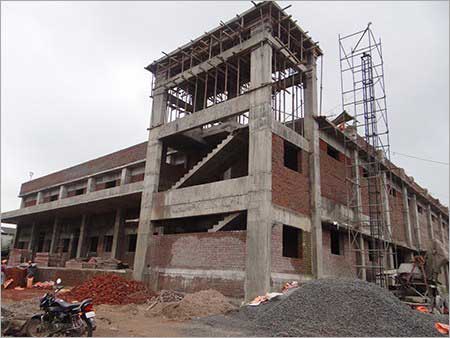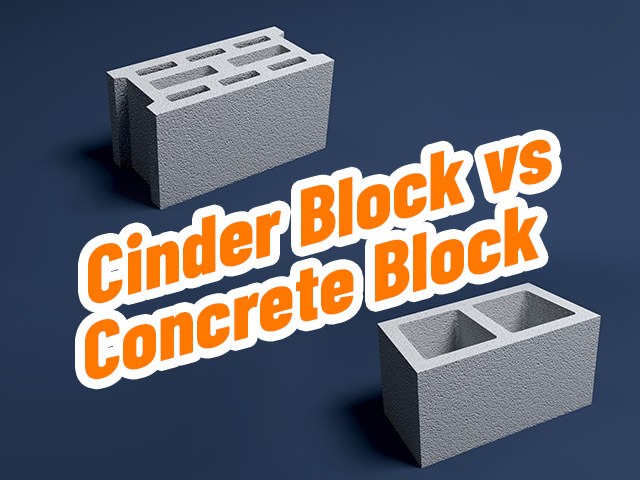Table of Contents
Flow Test
Flow Test is a laboratory test, which gives an indication of the quality of concrete with respect to consistency, cohesiveness and the proneness to segregation. In this test, a standard mass of concrete is subjected to jolting. The spread or the flow of the concrete is measured and this flow is related to workability.
Figure-1 shows the details of the apparatus used. It can be seen that the apparatus consists of a flow table, about 76 cm in diameter over which concentric circles are marked. A mould Made from smooth metal casting in the form of a frustum of a cone is used with the following internal dimensions. The base is 25 cm. in diameter, upper surface 17 cm. in diameter, and height of the cone is 12 cm.

The tabletop is cleaned of all gritty material and is wetted. The mould is kept on the centre of the table, firmly held and is titled in two layers. Each layer is rodded 25 times with a tamping rod 1.6 cm in diameter and 61 cm long rounded at the lower tamping end. After the top layer is rodded evenly, the excess of concrete which has overflowed the mould is removed. The mould is lifted vertically upward and the concrete stands on its own without Support. The table is then raised and dropped 12.5 mm 15 times in about 15 seconds. The diameter of the spread concrete is measured in about 6 directions to the nearest 5 mm and the average spread is noted. The flow of concrete is the percentage increase in the average diameter of the spread concrete over the base diameter of the mould.

The value could range anything from 0 to 150 per cent
A close look at the pattern of spread of concrete can also give a good indication of the characteristics of concrete such as tendency for segregation. Presently this test is not commonly used. In its place Flow Table Test is used as given in IS 9103 of 1999.
Flow Table Test
The BIS has recently introduced another new equipment for measuring flow value of concrete. This new flow table test is in line with BS 1881 part 105 of 1984 and DIN 1048 part 1. The apparatus and method of testing is described below.
The flow table apparatus is to be constructed in accordance with Figure- 2.a and 2.b. Flow table-top is constructed from a flat metal of minimum thickness of 1.5 mm. The top is in plan 700 mm x 700 mm. The centre of the table is marked with a cross, the lines which run parallel to and out to the edges of the plate, and with a central circle 200 mm in diameter. The front of the flow table top is provided with a lifting handle as shown in Figure- 2.b. The total mass of the flow table top is about 16 ± 1 kg.


The flow table top is hinged to a base frame using externally mounted hinges in such a way that no aggregate can become trapped easily between the hinges or hinged surfaces. The front of the base frame shall extend a minimum 120 mm beyond the flow table top in order to provide a top board. An upper stop similar to that shown in Fig. 6.10 (a) is provided on each side of the table so that the lower front edge of the table can only be lifted 40 ± 1 mm.
The lower front edge of the flow table top is provided with two hard rigid stops which transfer the load to the base frame. The base frame is so constructed that this load is then transferred directly to the surface on which the flow table is placed so that there is minimal tendency for the flow table top to bounce when allowed to fail.
Accessory Apparatus
Mould
The mould is made of metal readily not attacked by cement paste or liable to rust and of a minimum thickness of 1.5 mm. The interior of the mould is smooth and free from projections, such as protruding rivets, and is free from dents. The mould shall be in the form of a hollow frustum of a cone having the internal dimensions as shown in Figure- 1. The base and the top is open and parallel to each other and at right angles to the axis of the cone. The mould is provided with two metal foot pieces at the bottom and two handles above them.


Tamping Bar
The tamping bar is made of a suitable hardwood and having dimensions as shown in Figure.
Sampling
The sample of freshly mixed concrete is obtained.
Procedure
The table is made level and properly supported. Before commencing the test, the tabletop and inner surface of the mould is wiped with a damp cloth. The slump cone is placed centrally on the table. The slump cone is filled with concrete in two equal layers, each layer tamped lightly 10 times with the wooden tamping bar. After filling the mould, the concrete is struck off flush with the upper edge of the slump cone and the free area of the table-top cleaned off.
Half a minute after striking off the concrete, the cone is slowly raised vertically by the handles. After this, the table-top raised by the handle and allowed to fall 15 times in 15 seconds. The concrete spreads itself out. The diameter of the concrete spread shall then be measured in two directions parallel to the table edges. The arithmetic mean of the two diameters shall be the measurement of flow in millimetres.
I hope this article will help you. You may also want to see my other post from my Blog. If I have missed anything here, please let me know about that in the comment below this post.
Share it with your friends.
Happy Learning.
If you liked this article, then please help me to share this article with your friends through Facebook, Twitter, WhatsApp or Instagram. You can also find us on Facebook, Twitter, Instagram, Telegram Channel, YouTube Channel, and Pinterest. Also, Subscribe to our mailing list to get a new post update from us. And, do me a favour, if you find this post helpful, rate a 5 star below-




